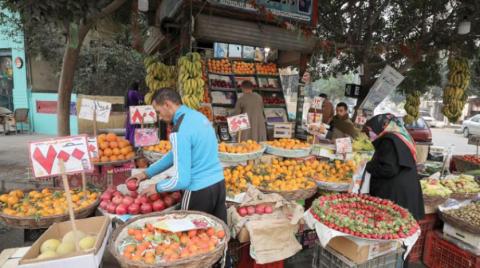
Transportation costs lifted Turkey’s annual inflation rate to 36.1 percent in December, significantly up from 21.3 percent in the previous month, according to official data.
This is the highest level since 2002 ,as the prices of transportation soared by 53.7 percent while food and non-alcoholic beverages cost 43.8 percent more when compared to a year earlier.
This comes against the backdrop of the country’s persistent interest rate cuts amidst strong inflationary pressures. The government said that they are taking these steps to promote economic growth and investments in the country. Since September, Turkey’s central bank has reduced the benchmark rate by 5 percent.
Lately, the government has also introduced some mechanisms to protect lira-denominated deposits in case the currency dropped beyond a certain threshold.
The lira is about 31 percent weaker now than it was on Sep. 23, when the process of cutting interest rate was first introduced, according to Bloomberg
In monthly terms, consumer prices went up by 13.6 percent in December, skyrocketing from November’s 3.5 percent. Again, the hike was majorly attributed to a 28.5 percent spike in transportation costs.
Furnishing and household equipment experienced a monthly inflation of 16.5 percent while that of food and beverages was recorded at 16 percent.
Singapore’s GDP
Singapore’s economy grew by 7.2 percent in 2021, broadly in line with the government’s official forecast and a rebound from a record contraction of 5.4 percent in 2020.
Meanwhile, Singapore’s annual gross domestic product growth was the fastest since a 14.5 percent expansion in 2010, when the economy emerged from the global financial crisis.
“I expect growth to be relatively strong. As the global economy begins to improve, I think that will also help support Singapore’s overall external demand conditions," said MUFG analyst Jeff Ng.
Moreover, the government earlier forecast GDP growth of 3 percent to 5 percent in 2022.
The manufacturing sector all over the world
The eurozone’s Manufacturing Purchasing Managers’ Index recorded 58 in December, down from the previous month’s 58.4 and the lowest in ten months, IHS Markit said.
While supply chain issues started to soften during the month, output growth remained the same one registered in the previous month. Also, despite a slowdown in the rate of input cost and output price inflation, they remained among some of the highest ever seen in the index.
Providers of capital and intermediate goods experienced the highest improvements in their conditions with manufacturers of consumer goods undergoing slower upturns.
“It has been an incredibly challenging period for eurozone manufacturers this second half of 2021, but the latest survey data hasn’t spoiled the festive cheer too much — we’re seeing some tentative, but very welcome signs that the supply chain crisis which has plagued production lines all across Europe is beginning to recede,” Joe Hayes, senior economist at IHS Markit said.
Italy, Greece and Austria were the top three performers in the sector as their indexes reached 62, 59 and 58.7, respectively.
Moreover, despite falling, India’s Manufacturing PMI Index was still comfortably above the 50-threshold, reaching 55.5 in December, according to the analytics and solutions firm.
Expansion of new work and output was high in December. In addition, confidence among businesses was high, yet supply chain disruptions, renewed concerns about COVID-19 and inflationary pressures are harming sentiment.
Meanwhile, South Korea’s manufacturing PMI went up to 51.9 percent in December, compared to 50.9 percent in November, indicating that the health of South Korea’s manufacturing sector improved at a faster pace in December, according to the London-based firm.
In addition, new orders, which have the highest weight in the index, increased during December at the fastest rate in three months, meaning that more sales were made to local customers. However, the overall expansion was weak compared to the one experienced in the first half of 2021.
Production volumes at South Korean manufacturers also fell in December, the index revealed. This was prompted by supply chain issues in the country.
Indonesia’s inflation
Higher prices of food caused Indonesia’s annual inflation rate to rise to 1.87 percent in December, up from 1.75 percent in the prior month, official data showed.
This is the sixth consecutive month in which the yearly rate increased and 2021’s highest rate.
Food, beverages and tobacco prices were 3.09 percent higher in December when compared to the previous year while costs of furnishings, household equipment and routine household maintenance jumped by 2.66 percent from a year earlier.











